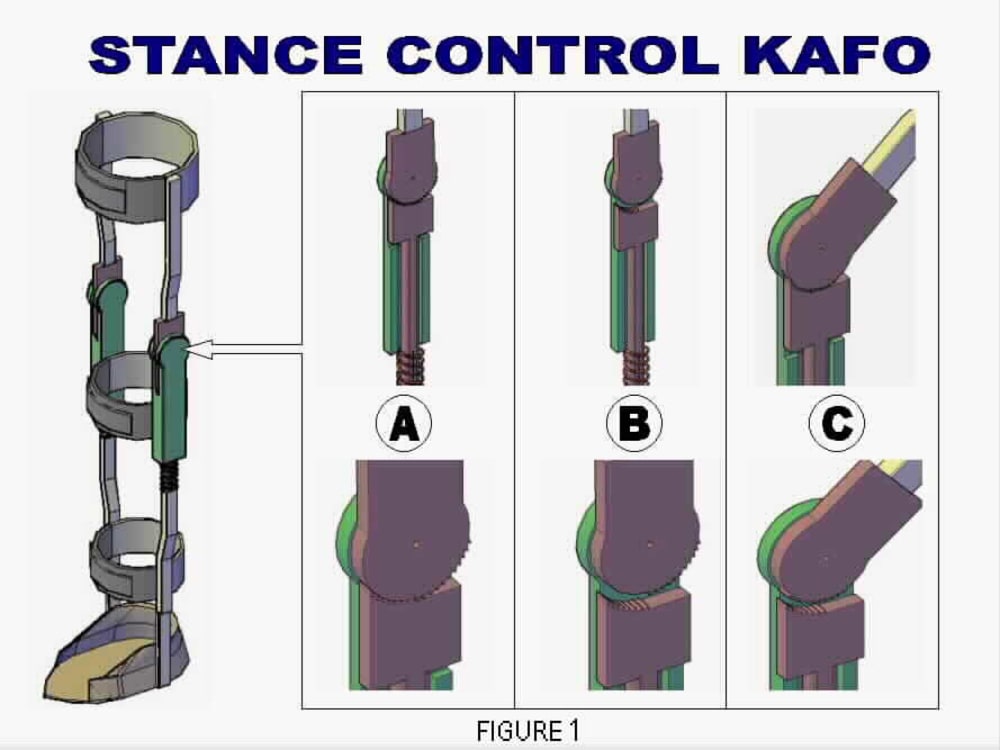Some people with disabilities or weak joints wear braces to keep certain weak joints straight so that the wearer's own bone structure supports his or her weight. They also help to keep legs and feet in "correct" positions, preventing the development of, or return of, muscle contractures or other deformities. Conventional braces are uncomfortable because they permanently locked the knee which prevent the user from swinging his or her leg freely. Stance Control enable the user to freely swing his leg in the swing phase but are locked for the stance phase, giving the user the same degree of security as locked knee-ankle-foot orthoses (KAFOs).
Various engineers and designers have developed different kinds of Stance Control KAFO. But the majority are complicated and incorporate many parts. This concept design of Stance Control KAFO is simpler and easy to understand.
Looking at FIGURE 1, column A, B and C shows the different position of the stance control knee joint. Column A shows the position of the knee joint when the pressure is applied at the footplate when the leg is in an straight direction. Column B shows the position of the knee joint when there is no pressure at the footplate. Column C shows the position of the knee joint when a pressure is applied at the footplate when the leg is in an angle position.
When a person wearing this brace steps, pressure is applied to the footplate causing the rod (figure 2) to push the lower gear plate up. The lower gear plate teeth connects to the upper gear plate teeth locking the knee joint. When the person lifts his/her foot, pressure at the footplate is remove and the spring pushes the rod down separating the lower gear plate away from the upper gear plate. When the lower and upper gear plate are separated, leg can be freely swing..
Like this entry?
-
About the Entrant
- Name:Porferio Eliang
- Type of entry:individual
- Software used for this entry:ACAD
- Patent status:none





